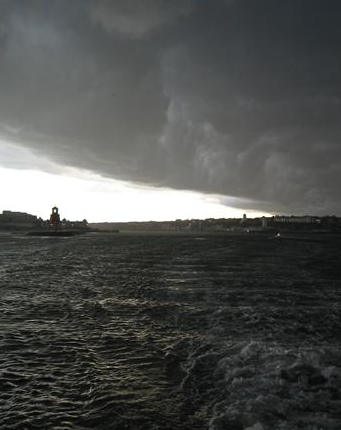
Editing your story as a whole means you need to have a good understanding of how most successful stories work. There are a number of ways to look at this – two of the most helpful (for me with my current story) being: The three arc structure and the hero’s journey
The three arc structure is quite simply what it seems, it divides the story into three parts –
Act One – the set-up – this is where you introduce the reader to the setting, the characters and the situation (conflict) they find themselves in and where you ask what it is they want – what is their goal? Ask yourself if you have set the novel up in this way – are all the major characters there? Is there an identifiable plot point/incident – Plot Point One that moves the story on and drives the main character into conflict? This incident can often be a good place to start your novel.
Act Two – the middle – how the story develops. Here there will be a series of obstacles, and mini crises, leading to the final crisis – the climax. As the middle progresses tension will rise and dip but the arc of tension needs to get ever higher to the final climax. The resolution of the Climax is Plot Point 2. Can you identify this point? Does tension rise? Does the middle sag?
In the middle you need to move the plot along, offer new insights to your characters especially your protagonist and deepen the conflict – each obstacle should be more difficult, if it’s not then the smaller challenges seem inconsequential and this means tension disappears. The consequences following each challenge should be more difficult to swallow and maybe some new and compelling information comes to light that changes the way your characters see things
Act Three – once the final climax is reached then tension dissipates –all the loose ends are tied up and the story is drawn to a close, not drawn out
With this structure in mind there are other important points to consider about beginnings, endings and middles which you can find in earlier posts.
So now back to the business of editing – I’m over a third of the way through and think I’m going to have to beef things up a bit more in the middle – I need to make sure the challenges for Danny Beck rise in an arc of increasing tension, I need some new information – I’ve already decided what that is – so lots of work to do – I’m afraid Hero’s Journey will have to wait!
On a final note – good luck to all the Easington writers who are editing their work following Thursday’s workshop. It was a great day. Hope you weren’t too exhausted at the end of it. Editing is hard work – don’t we know it!
Looking forward to the poems!
Loved this photo -somehow reflects the dark tones of your story. And some very useful advice here, I sometimes think it’s a good idea to draw the shape of the novel and label its the cumulative crises on a (very ) big piece of paper….
wx
Yes thank you Wendy – a very big piece of paper is what is needed – good to check out the shape.
A x
Thank you zeefred – enjoyed your twitter
A x
The three act form in writing has many parallels with the sonata form in music. Act one is the exposition: the main character (first subject) is introduced along with at least one contrasting character (second subject). Their motivations are explored and conflicts are set up. Act two is the development: the tension builds through this section, the characters (themes) meet various crises and work through them, sometimes going off at tangents, through massive modulations, but never straying too far from their own thematic identity. Act three is the recapitulation: a shorter section where our original characters are shown again, changed by the conflicts of the developmental section, as many as possible of which must now be resolved before the ending.
To be honest, I hadn’t thought of the parallels before today, and there are major differences which I’ve ignored for the sake of the argument, but the overall arc of the three act form is definitely common to both classic novel form and sonata form.
I’ll have to trust you on this one Cathy and bow to your superior musical knowledge – love the creative comparisons though, they are always interesting to make and can often be revealing too.
Avril
Great day on Thurs. have poem ready. am sending it pronto. Hope you enjoy the workshops as much as I do. I wonder what surprise you have for us this week and what challenge!
I hope you do not mind if I print the three acts off totake to group on thurs.
Mary x
So glad you enjoyed the workshop, love your poem Mary and Susans poem too, both of which I have just received – brilliant! Please feel free to print off anything of use. Sorry about my late reply but have been laid low with a bug!
Avril x